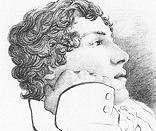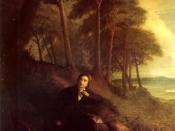Inevitable Death in John Keats's Works
John Keats wrote very deep poems at such a young age. Keats's poem, "Ode to a Nightingale," communicates a very morbid tone. The poem is about a depressed Keats who sees a glimmer inspiration in the form of a beautiful singing bird, a nightingale. Keats's poem "When I have Fears That I May Cease to Be" is another morbid poem, but on a whole different level. "Fears" is about Keats's struggle for life with his tuberculosis. It speaks of no hope but rather his unavoidable death. Although "Ode To a Nightingale" and "When I have Fears That I May Cease to Be" have a similar death inspired tone, they speak of death on different levels. "Nightingale" shows some hope to Keats's life while "Fears" speaks of death only.
"Ode to a Nightingale" was written in a spur of the moment in which Keats's was inspired by a singing bird.
Keats starts off his poem with. "My heart aches, and drowsy numbness pains / My sense, as thought of hemlock I had drunk, / Or emptied some dull opiate to the drains" (Nightingale lines 1-3.) This shows Keats's present condition once he sees the Nightingale. He feels as if he has been intoxicated with the Nightingale's sheer beauty. Its wonderful voice has begun to dull his pain naturally. Keats is showing a glimmer of hope here by saying that the sweet melody takes him to a better place where he can forget his pain. Keats goes on to say, "Away! Away! For I will fly to thee, / Not charioted by Baechus and his pards, / But on the viewless wings of Poesy" (Nightingale lines 31-33.) Keats is saying how he will fly away with the bird...


